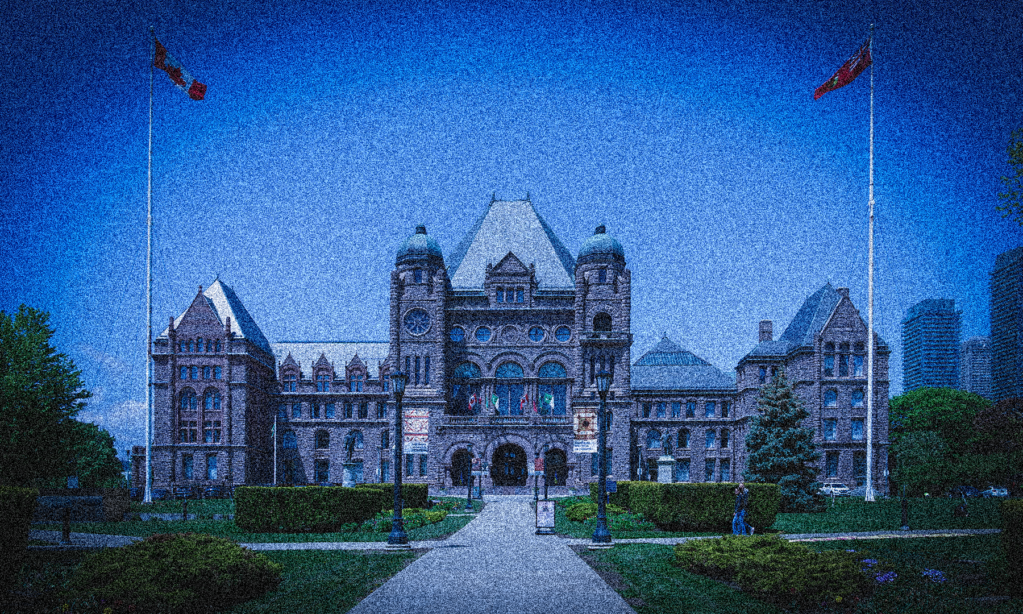When Ontario Education Minister Stephen Lecce introduced Bill 28 on October 31, he was both continuing a long Canadian tradition of legalized strikebreaking and breaking new and frightening ground on the form that strikebreaking takes.
Bill 28, deceptively titled the Keeping Students in Class Act, is an attempt to preemptively put an end to a strike by CUPE education workers, which was set to begin today. The bill is actually not about students at all—it’s about a government trying to break the power of public sector workers to bargain collectively.
The education workers that the government is targeting are support staff, such as custodians, librarians, and early childhood educators. They are among the lowest paid in Ontario’s education system, making an average of $39,000 per year, according to CUPE. The workers have been demanding pay increases to bring them in line with other education workers. The education ministry responded by offering 1.5 to 2.5 per cent, which amounts to a significant pay cut after inflation.
When the union notified the government of its intention to strike, the education minister introduced Bill 28, which preemptively declared CUPE’s strike illegal and imposed a contract on education workers.
The situation is developing fast, but there’s some important context to keep in mind as things heat up.
1) This is the first time that the notwithstanding clause has been used against the right to strike
Section 33 of the Canadian Charter of Rights and Freedoms, known as the “notwithstanding clause,” allows governments to suspend fundamental rights for a duration of up to five years. Originally, the authors of the charter believed that the notwithstanding clause would only be used extremely sparingly, because they believed that it would be political suicide to suspend the constitution.
This is the third time that the Ontario government, under Premier Doug Ford, has used the notwithstanding clause, which had never before been used in Ontario. It has also never been used against the right to strike before—other than once in 1980s Saskatchewan, which the courts later ruled unnecessary due to the strikebreaking legislation being legal. In Ontario’s case, the legislation would almost certainly not be legal without the clause.
Despite the fact that the authors viewed the notwithstanding clause as a tool that was unlikely to be used often, Canada’s two largest provinces have used it five times in the past four years—a dramatic increase in frequency compared to previous decades and a troubling sign of increasing government willingness to disregard fundamental rights.
2) The right to strike and collectively bargain are constitutionally protected
In 1987, a series of Supreme Court rulings known as the Labour Trilogy confirmed unions’ worst fears about the charter—the decisions found that the right to organize, collectively bargain, and strike were not protected by the constitution, which, the justices argue, only protected individual rights, not the collective rights of organizations like labour unions.
The Labour Trilogy decisions were in force for decades, until a number of decisions in 2015 overturned the precedent and found that the right to collective bargaining and the right to strike are constitutionally protected. These decisions are known as the New Labour Trilogy and are rightly considered to be a sea-change in the way that labour organizing is legally protected in Canada. Following those decisions, governments could no longer issue legislation that included blanket bans on the right to strike or organize.
The New Labour Trilogy is still in effect today—which is why Ontario’s strikebreaking law against CUPE education workers evokes the notwithstanding clause as an admission that it is deliberately violating those rights.*
3) Canada uses strikebreaking legislation on a shockingly regular basis
The strikebreaking legislation that Ontario is using against education workers is part of a long legacy of Canadian governments, both federal and provincial, using legislation to make otherwise legal strikes illegal.
The first federal piece of so-called “back-to-work” legislation in Canada was enacted in 1950 against railroad workers and it wouldn’t be used again until 1958. In the 1960s and ’70s, however, use of strikebreaking legislation exploded in Canada—being used an average of four to five times per year from that point onwards (with a brief drop in the 1990s), counting both federal and provincial legislation.
To put that into perspective, the United States has similar strikebreaking powers—but has only used those powers twice since 1978.
Canada’s constant use of strikebreaking legislation has led some experts, like the late-political scientist Leo Panitch, to declare “the end of the era of free collective bargaining in Canada.” If the government can simply render otherwise legal strikes illegal with the stroke of a pen, Panitch argues, then the right to strike does not fundamentally exist.
4) If CUPE defies the strikebreaking legislation, they wouldn’t be the first to do so
Strikebreaking legislation might be a powerful tool that governments of all levels and of all parties use against workers, but workers in Canada have a long and proud history of defying such legislation to protect workers’ rights—their own and others’—as it appears that CUPE’s education workers are planning to do.
In fact, the way that many federal workers won the right to bargain at all was through an illegal postal workers’ strike in 1965. When subjected to a strikebreaking law in 1978, CUPW leadership openly defied the legislation and the members of the executive council were arrested and jailed. Just a few years later, CUPW would be the first national union to win maternity leave for postal workers—a gain that quickly spread through the rest of the public service, and then, through legislation, was extended to all Canadian workers.
Strikebreaking legislation was also used in an attempt to quell a 2012 student strike in Quebec, when students fought against a tuition increase of nearly 80 per cent. Bill 78 made picketing near schools illegal and imposed bankrupting fines on student unions that continued strike activity. The student unions openly defied the law and their defiance catalyzed a broad popular movement in support of the students’ right to protest and strike—a movement that eventually brought down the longstanding Liberal Party government of Jean Charest.
5) Union rights are women’s rights
Bill 28 is an unprecedented attempt to roll back hard-won gains that labour unions have made to protect the right to bargain. It is the first time since the New Labour Trilogy that any Canadian government has attempted to explicitly override the new constitutional protections for union activity—and if it’s successful, it won’t be the last.
The workers that the Ontario government is targeting with Bill 28 are some of the lowest-paid workers in Ontario’s education system. They also happen to be overwhelmingly women. These workers’ attempt to improve their wages and working conditions should be understood as an attempt to advance gender equality in a country where women make, on average, 89 cents for every dollar that men make.
The labour movement has historically been one of the most powerful vehicles to advance gender equality in Canada. Rural and Suburban Mail Carriers (RSMCs) at Canada Post are two-thirds women, compared to urban letter carriers, who are 69 per cent men. RSMCs have significantly lower pay and worse benefits than their urban counterparts, and CUPW continues to fight hard to bridge that gap. The Public Service Alliance of Canada (PSAC) fought for decades for gender pay equity in federally regulated industries, winning the passing of the Pay Equity Act in 2021.
With this in mind, the Keeping Students in Class Act should be viewed as an attack on women’s rights in Canada. If working women are ever going to close the gender pay gap, then workers and unions will need all the tools at their disposal.
Ontario has the money
Provinces across Canada, including Ontario, have found unexpected budget windfalls over the past year, while workers—especially women and other marginalized groups—have borne the brunt of rising inflation and a looming recession. The government of Ontario’s decision to attack education workers’ right to collectively bargain cannot excuse its behaviour by pointing to a deficit or crying poor. The government of Ontario has the money to pay dignified wages for education workers, but it has chosen not to—unless it is forced.
All politicians are subject to popular pressure. Whether the Education Ministry follows through with its threats—and whether other governments use Bill 28 as a template for future strikebreaking legislation—will be impacted by how (and how many) constituents respond, individually and collectively. Whether that means calling MPPs, doorknocking in specific ridings, signing petitions, holding protests, or engaging in solidarity actions; angry constituents have many avenues to push back against legislated strikebreaking – a clear shot across the bow at organized labour – and show solidarity with education workers.
* In the 2015 case which established the right to strike as constitutionally protected, the Supreme Court of Canada also recognized that alternative dispute resolution methods, such as binding arbitration, can be used in place of job action when agreed to by the parties. The courts also acknowledged that the right to strike could be limited under some circumstances using Section 1 of the Charter, which says that Charter rights are “subject only to such reasonable limits prescribed by law as can be demonstrably justified in a free and democratic society.







